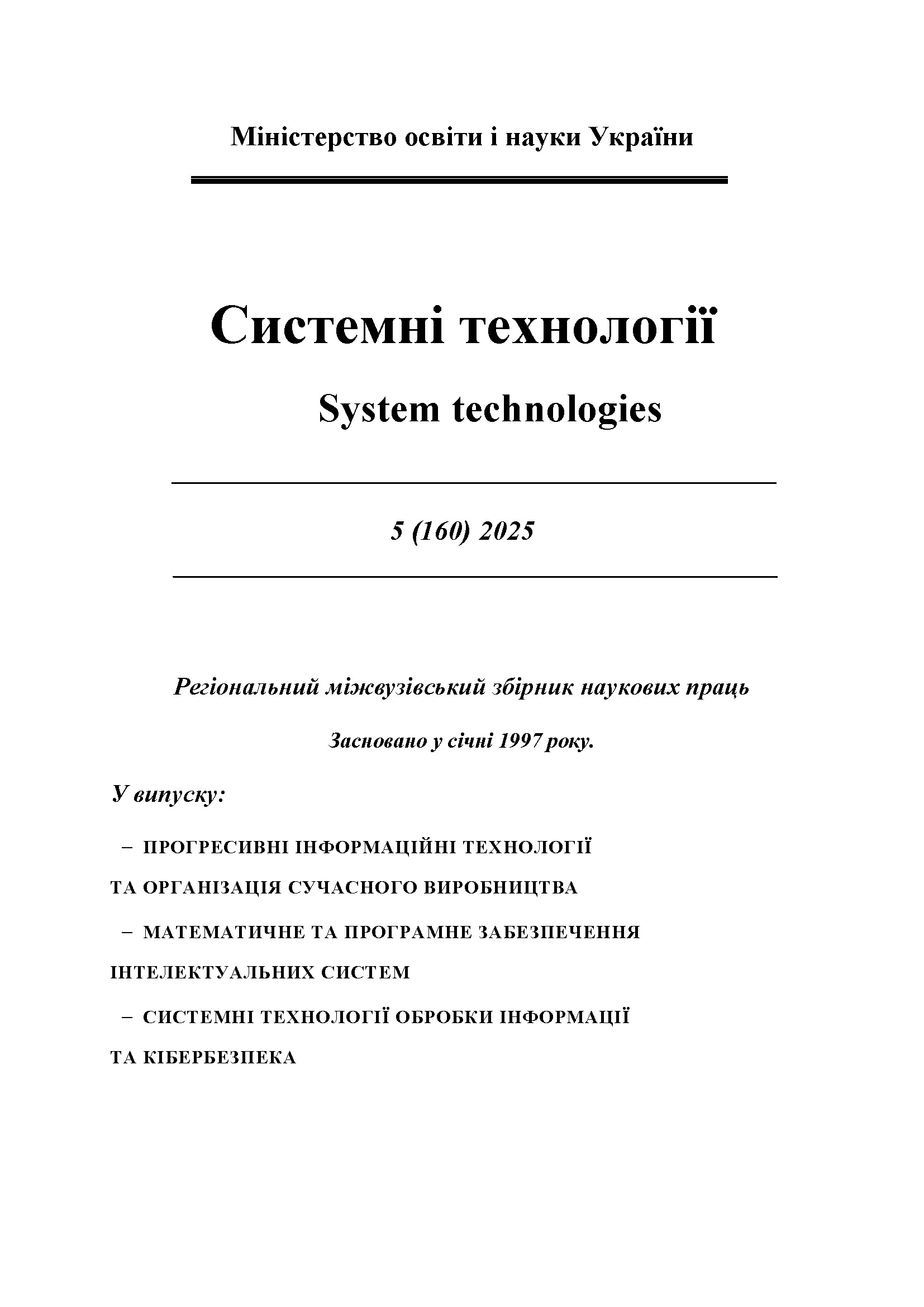Testing the homogeneity of pseudorandom sample by the anderson and Bush-Wind criteria
DOI:
https://doi.org/10.34185/1562-9945-5-160-2025-03Keywords:
mathematical statistics, method, sample, probability distribution, Anderson criterion, Bush-Wind criterionAbstract
The study of statistical homogeneity of samples is an important task in mathematical statistics, since it allows us to assess the reliability of experimental measurements and deter-mine whether they belong to the same general population. This article considers two ap-proaches to checking statistical homogeneity of samples: the two-sample Anderson criterion and the combined Bush-Wind criterion. Each of these criteria has its own characteristics, scope and effectiveness depending on the sample size and probability distribution being ana-lyzed. The purpose of the study: to assess the effectiveness of two approaches to checking sta-tistical homogeneity of samples: the two-sample Anderson criterion and the combined Bush-Wind criterion, as well as to determine the influence of sample size and statistical parameters of pseudo-random variables, and to identify the disadvantages and advantages of using these criteria. Research methods: the study considers the criteria for checking the homogeneity of pseudorandom variables: the two-sample Anderson criterion and the combined Bush-Wind criterion, which are used to determine the homogeneity of pseudorandom samples under con-ditions of unknown statistical parameters (probability distribution, mathematical expectation, variance. Scientific novelty of the study: it was determined that, if the samples under study are n≤100, then the Anderson criterion is more reliable for the analysis of pseudorandom vari-ables with unknown statistical parameters, since it demonstrates higher resistance to anoma-lies, compared to the combined Bush-Wind criterion. It was determined that when studying small samples (n=20÷40) both criteria show a high probability of making the correct decision when analyzing pseudorandom variables for homogeneity with different statistical parame-ters. Practical novelty of the study: for the analysis of random variables with unknown statis-tical parameters for short samples, it is proposed to use the two-sample Anderson criterion and the combined criterion Bush-Wind, but to increase the reliability of the results in the study, in conditions of contamination, it is advisable to combine statistical criteria with data cleaning methods or use robust analogues. Areas of application: the study can be used in ar-eas where it is necessary to assess the statistical homogeneity of samples, in experimental sci-ences, sociology, medicine and engineering, to assess the quality of measurements and iden-tify possible deviations in the data.
References
Malaichuk, V., Klymenko, S., & Astakhov, D. (2023). Computer Processing of Measure-ments in Problems of Observation of the Condition of Technical Objects. Journal of Rocket-Space Technology, 30(4), 99-106. https://doi.org/10.15421/452213
Kobzar, A. I. (2006). Applied Mathematical Statistics: For Engineers and Researchers. M.: Fizmatlit.– R. 816
GailF. FahoomeTwenty Nonparametric Statistics And Their Large Sample Approxima-tions / Journal of Modern Applied Statistical Methods. No2, Wayne State University, 2002. p.248–268.
Hajek J. Nonparametric Statistics. Holden-Day, San Francisco, 1969. – R. 346.
Tablytsi funktsii ta krytychnykh tochok rozpodiliv. Rozdily: Teoriia ymovirnostei. Ma-tematychna statystyka. Matematychni metody v psykholohii. / uklad. M. M. Horoneskul. Kharkiv: UTsZU,2009. 90s.
Turchyn V.M. Teoriia ymovirnostei i matematychna statystyka: navch. pos. Dnipropet-rovsk: IMA, 2014. 556 s.
Rohach I.M., Keretsman A.O., Sitkar A.D. Pravylno vybranyi metod statystychnoho anal-izu – shliakh do yakisnoi interprytatsii danykh medychnykh doslidzhen. Naukovyi visnyk Uzhhorodskoho universytetu, seriia «Medytsyna», vypusk 2 (56), 2017 r. Rezhym dostupu: https://dspace.uzhnu.edu.ua/ jspui/bitstream/lib/31008/1/25.
Downloads
Published
Issue
Section
License
Copyright (c) 2025 System technologies

This work is licensed under a Creative Commons Attribution 4.0 International License.















